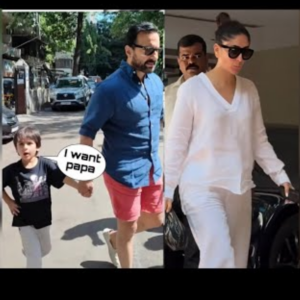In recent years, Bollywood, the vibrant heart of Indian cinema, has been under intense scrutiny, with allegations ranging from nepotism to drug abuse and exploitation. Amidst the glitz and glamour lies a darker underbelly, concealed behind the dazzling lights and extravagant sets. This exposé sheds light on the hidden truths of Bollywood, urging viewers to confront uncomfortable realities.
Introduction:
Bollywood, often hailed as the epitome of entertainment, has captured the imaginations of millions worldwide. However, beyond its dazzling façade, lies a labyrinth of controversies and scandals that have tarnished its reputation. This article delves deep into the shadows of Bollywood, exploring the systemic issues that plague the industry.
Nepotism and Favoritism:
One of the most persistent criticisms leveled against Bollywood is the prevalence of nepotism and favoritism. The industry is often accused of promoting actors and actresses based on their family connections rather than talent, stifling opportunities for newcomers. Iconic film families wield significant influence, monopolizing key positions in production houses and casting decisions. This nepotistic culture not only undermines meritocracy but also perpetuates inequality within the industry.
Exploitation and Harassment:
Behind closed doors, Bollywood harbors a culture of exploitation and harassment, particularly towards aspiring actors and actresses. Numerous accounts have surfaced, alleging instances of casting couches, where individuals are expected to exchange sexual favors for roles. Additionally, reports of harassment and abuse by influential figures within the industry have come to light, exposing the vulnerability of those trying to make a mark in Bollywood. Despite occasional exposés, many victims remain silenced by fear of retaliation, perpetuating a cycle of abuse.
Drug Abuse and Addiction:
In recent years, Bollywood has been rocked by scandals involving drug abuse and addiction. High-profile cases have shed light on the widespread use of narcotics within the industry, with several celebrities being implicated in drug-related offenses. The glamorization of substance abuse in films further normalizes this behavior, influencing impressionable audiences. Moreover, the nexus between drug cartels and Bollywood raises serious concerns about the integrity of the industry and its impact on society.
Censorship and Suppression:
Bollywood operates under a complex web of censorship and suppression, stifling creative freedom and dissenting voices. Filmmakers often encounter hurdles when addressing controversial topics or challenging societal norms, facing censorship boards and political pressure. Instances of film bans and censorship highlight the precarious balance between artistic expression and societal sensitivities. Furthermore, the marginalization of alternative narratives perpetuates a homogenized portrayal of Indian culture, limiting diversity in cinematic representation.
Conclusion:
While Bollywood continues to captivate audiences with its larger-than-life spectacles, it is imperative to acknowledge the darker realities that lurk beneath its glittering surface. From nepotism and exploitation to drug abuse and censorship, the industry grapples with a myriad of systemic issues that demand attention and reform. As consumers of Bollywood cinema, it is our responsibility to critically engage with its content and hold the industry accountable for its actions. Only through collective awareness and advocacy can we strive towards a more equitable and ethical Bollywood for generations to come.
News
Kareena Kapoor, Saif Ali Khan with Jeh and Taimur jet off for next summer holiday in casual airport looks: Watch
Kareena Kapoor, Saif Ali Khan, and their two sons, Taimur and Jeh, took off for their next summer holiday, dressed in casual airport looks. See what they…
Saif Ali Khan Was Dating Italian GF, Rosa Catalano Before Marrying Kareena, Here’s Why They Broke Up
Saif Ali Khan was head over heels in love with Italian model, Rosa Catalano, after his divorce from Amrita Singh. Here’s everything you need to know about…
Kareena Kapoor Saif with Taimur and jeh Ali khan at airport avoiding each other after divorce news
Kareena Kapoor, Saif Ali Khan Twin In White, Get Papped With Sons Taimur And Jeh At Airport; Kareena Kapoor, Saif Ali Khan spotted with kids at airport…
Alia Bhatt First Reaction & Criticized Saif Ali Khan after divorce with Nanand Kareena Kapoor
Kareena Kapoor has a cute compliment for ‘bhabhi’ Alia Bhatt: ‘She looks like a…’ Talking about Alia Bhatt, Kareena Kapoor associated her with a rose ‘because it’s…
Kareena Kapoor Jealous With Saif Ali Khan And Reveal Big secret About Saif Ali Khan After Divorce
‘Kareena Kapoor, Saif Ali Khan insist Taimur picks after him, doesn’t waste food’: Jaideep Ahlawat calls starkid ‘inquisitive, smart’ Jaideep Ahlawat said Kareena Kapoor and Saif Ali…
Kareena Kapoor Shocking Statement after leaving Saif Ali Khan House amid DIVORCE news
Kareena Kapoor Khan Shares Romantic Pictures After Saif Changed His Tattoo, Starting Divorce Rumours Kareena Kapoor Khan posted a couple of romantic photos with Saif Ali Khan…
End of content
No more pages to load











